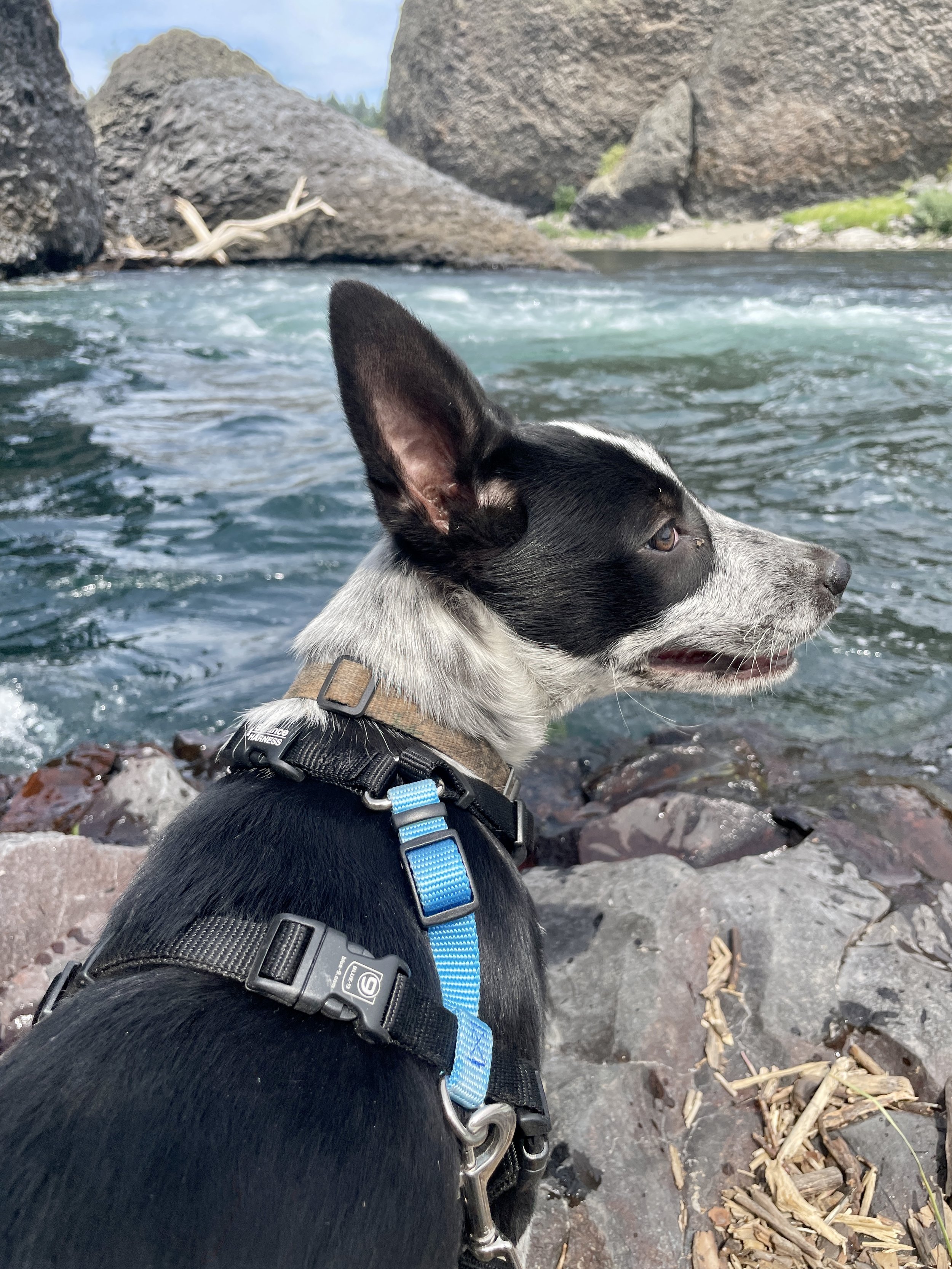Trail Etiquette for Hiking With Your Dog
Leash Up — It’s the Law (In And Around Spokane)
A sign at Riverside State Park.
In all of Spokane and Spokane County, dogs are required to be on leash — no exceptions other than official dog parks. This includes city parks, county parks, state parks, and trails. Even if the area feels remote, leash laws still apply. (And no, e-collars are not leashes under the law.)
Yes, even if your dog is friendly. Yes, even if “nobody’s around.” Yes, even on trails you’ve walked a hundred times without seeing another soul.
Leash laws exist to protect wildlife, people, other dogs, horses, and your dog too. Off-leash dogs can create dangerous situations — from startling a horse or biker to triggering a fight with a leashed dog who doesn’t want to say hi.
Keeping your dog leashed isn’t just about avoiding a ticket (yes, that can happen). It’s about being a respectful, responsible part of the trail community.
2. Recall Is Non-Negotiable — Even on a Leash
Whether your dog is on a long line or you're in a place where dogs can be off leash, you should be able to recall your dog immediately when someone is approaching — human or animal.
This isn’t the time to yell “He’s friendly!” and let your dog race over for a sniff. Recall means call your dog and actually get a response — promptly and reliably.
It doesn’t have to be perfect, but your dog should be under control. That kind of reliability doesn’t happen on its own — it takes training. If you don’t have it yet, keep your dog close and stay aware of your surroundings. Remember, most hiking spots in Spokane are shared with other hikers, runners, mountain bikers, and horseback riders - they can come up fast. Wildlife, such as deer or moose, can pop up out of nowhere.
3. Step Aside When Others Are Coming
When you see another person, dog, or horse approaching, move off the trail and give them space to pass. This is basic courtesy — especially if you have a dog who’s reactive, overexcited, or just still learning.
Don’t wait until the last second. Step aside early, put your dog in a sit or down, and let the other person go by without incident. I step off the trail, call Olive into heel, and reward her as people go by, so that this will eventually become her default: someone approaches, come into heel. No need to chase or bark or approach anyone - simply come to my side and wait.
If your dog is nervous, this gives them a chance to watch and learn in a structured way. If your dog is excited, it helps reinforce good behavior.
Your dog should never approach another person or animal without their express consent. Don’t assume other hikers want to say hi to your dog or that horses will be fine with your dog barreling excitedly over. Be respectful and responsible.
You’re not just being polite — you’re training.
4. Pick It Up. Pack It Out.
I pack out poop bags in my waist bag when hiking with my dogs.
Nobody wants to step over your dog’s poop on their hike. And nobody wants to see your poop bag left on the side of the trail “to grab on the way back.” More often than not, people forget it. And dog poop doesn’t disappear as quickly as you think.
Bring bags, bring a clip or a container, and pack it all the way out.
Leaving dog poop in the woods pollutes water sources, spreads disease and parasites, disrupts local wildlife, and ruins the experience for everyone else. It’s not a small thing — it’s your responsibility.
Pro tip: dogs generally poop within the first couple minutes of getting out of the car. I always hang out near the trash can or the parking lot for 5 minutes, so my dogs can poop before I start the hike.
5. Mind the Wildlife
The Spokane area is home to deer, moose, fox, turkeys, snakes, skunks, porcupines, and more (remember the cougar?). You may not see them, but your dog probably will — and it only takes one bad encounter to end a hike with a vet visit or worse. Deer and moose will absolutely stomp and injure or kill a charging dog.
That’s another reason to keep dogs leashed and under control — especially in spring and summer when babies are around and animals are more protective.
6. Be Realistic About Your Dog’s Needs and Limits
Not every hike is right for every dog. Think about:
Fitness level — Can your dog handle the terrain and distance?
Temperature — Heat stroke is real, especially for thick-coated breeds. Remember, your dog is not as efficient as cooling themselves as you are.
Paw protection — Rough trails can tear up soft pads. Bring paw protection if needed. (I like Musher’s Secret.)
Water — Don’t rely on natural sources. Always bring your own.
It’s okay to keep hikes short while you build up stamina. It’s also okay to turn around if your dog is overstimulated, sore, or struggling. Every summer the news is full of stories about dogs needing to be carried off mountains by rescue personnel because owners tried to hike 10 miles in 100 degrees with their Newfoundland, or a dog has to receive medical care for severe burns to paw pads after hiking for miles on scorching ground. Don’t be that person. Take care of your dog.





